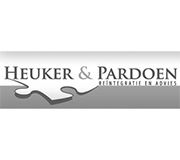Keeping Web Users Safe By Sanitizing Input Data

 |
In my last article, I spoke about several common mistakes that show up in web applications. Of these, the one that causes the most trouble is insufficient input validation/sanitization. In this article, I’m joined by my colleague Peter (evilops) Ellehauge in looking at input filtering in more depth while picking on a few real examples that we’ve seen around the web. As you’ll see from the examples below, insufficient input validation can result in various kinds of code injection including XSS, and in some cases can be used to phish user credentials or spread malware.
To start with, we’ll take an example[1] from one of the most discussed websites today. This example is from a site that hosts WikiLeaks material. Note that the back end code presented is not the actual code, but what we think it might be based on how the exploit works. The HTML was taken from their website. We think it’s fair to assume that it’s written in PHP as the form’s action is index.php.
In this code, the query string parameter search is echoed back to the user without sanitization. An attacker could email or IM unsuspecting users a crafted URL that escapes out of the and does nasty things with JavaScript. A simple way to test for this exploit without doing anything malicious is to use a URL like this:
http://servername/index.php?search=">
This exploit works because PHP has no default input filtering, and the developers haven’t done any of their own filtering. This exploit would work just as well in most other programming languages as most of them also lack default input filtering. A safer way to write the above code is as follows:
$search = filter_input(INPUT_POST | INPUT_GET, 'search', FILTER_SANITIZE_SPECIAL_CHARS);
?>

- Login om te reageren






